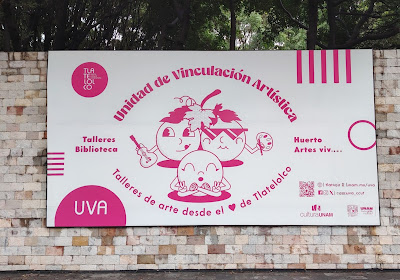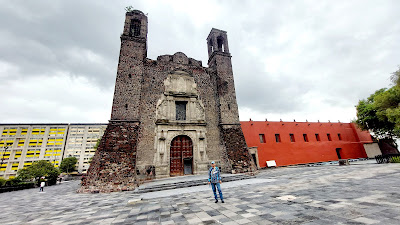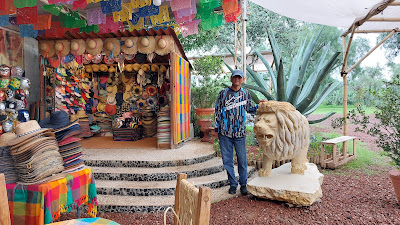"Those who do not remember the past are condemned to repeat it..." - George Santayana
 |
| (Pyramid of the Moon in Teotihuacan) |
Day 12: 30/06/25 (Monday)
 |
| (Museo del Tequila, dedicated to the history of Mexican drink) |
 |
| (A street scene in front of the hotel) |
 |
| (A mural painted on the wall) |
 |
| (An overloaded makeshift garbage truck) |
 |
| (A wall heavily covered with graffiti) |
 |
| (Passing by some homeless dwellings) |
 |
| (Intermittent rain in Mexico City) |
 |
| (Street Arts in Mexico City) |
Today we joined the Teotihuacan and Basilica Amigo Tours where we are going to discover the magic of Teotihuacan by exploring the the ancient ruins complex where the Pyramid of the Sun and Moon are located. On the way back we will visit the stunning Basilica of Guadalupe, one of the most important religious sites in Mexico. We will also stop at some historical places in town.
 |
| (Amigo Tours provide variety of private and group tours) |
 |
| (The Tlatelolco University Cultural Centre) |
 |
| (Manifesto of Mexican student movement of 1968) |
 |
| (Street Art Tlatelolco) |
.jpg) |
| (The Colegio de Santa Cruz de Tlatelolco) |
Our first visit was to the Plaza de las Tres Culturas, literally the 'Plaza of the Three Cultures', the main city square of the ancient Tlatelolco neighborhood.
The Plaza is the centerpiece of a dynamic section of the city, and thus named because it contains representative works from three major periods of Mexico City history. These are the pre-Hispanic archaeological ruins, the Spanish colonial culture of the Colegio de Santa Cruz, and the Modern Mexican culture, most notably of the architect and urbanist, Mario Pani, who designed the square.
 |
| (Archaeological remains of Aztec city of Tlatelolco) |
 |
| (Listening to the history of Tlatelolco) |
 |
| (One of the oldest archeological sites in the city) |
 |
| (Excavations have yielded thousands of objects and bodies) |
Next to the ruins is the Church of Santiago Tlatelolco which was erected after the Conquest, in 1521. The victors chose the site where the Mexica had resisted military attacks for more than 80 days. When the conquistadors arrived at Tlatelolco, they destroyed the remains of the Mexica, aiming to erase all traces and legacies of such an important culture.
The broken structural remains became part of the construction of the Church of Santiago Apóstol. This building serve as the Imperial College of the Holy Cross of Tlatelolco, In the 19th century, it was used as a military prison and remained so until the 20th century. In 1976, it was renovated and housed the Historical Archive of the Ministry of Foreign Affairs.
 |
| (The Church of Santiago Apostol) |
 |
| (The old doors to the chapel) |
 |
| (Blending the prehispanic, Viceregal and modern cultures) |
 |
| (Inside the Church of Santiago Apostol) |
 |
| (A page from a book on the spreading of christianity) |
After the visit to Tlatelolco, the bus took us to Teotihuacan, a vast Mexican archaeological complex about forty kilometers northeast of Mexico City. Before we entered the complex, we visited the Obsidian Workshop where the original Mexican handicrafts and artworks are made. As an antiquity, obsidian was highly valued for its sharp edges, which made it ideal for creating tools, such as arrowheads, blades, and cutting edges. In Mexico, obsidian mirrors were believed to possess divination abilities, providing a view into the invisible realms. Obsidian sources in Mesoamerica are limited in number and distribution, and are restricted to the volcanic regions of the Sierra Madre Mountains as they run through Mexico and Guatemala. Tourists can buy their souvenirs from the many souvenir shops here.












.jpg)


































































No comments:
Post a Comment